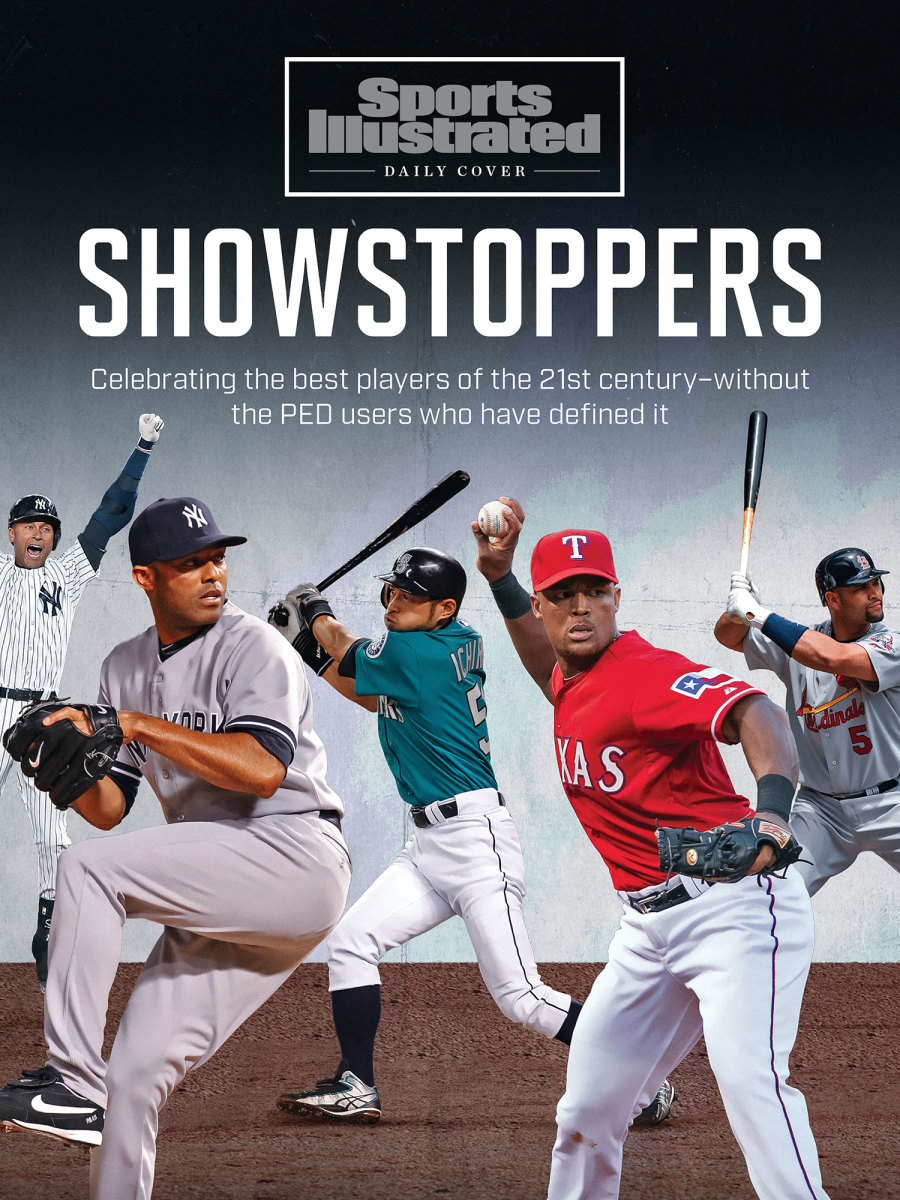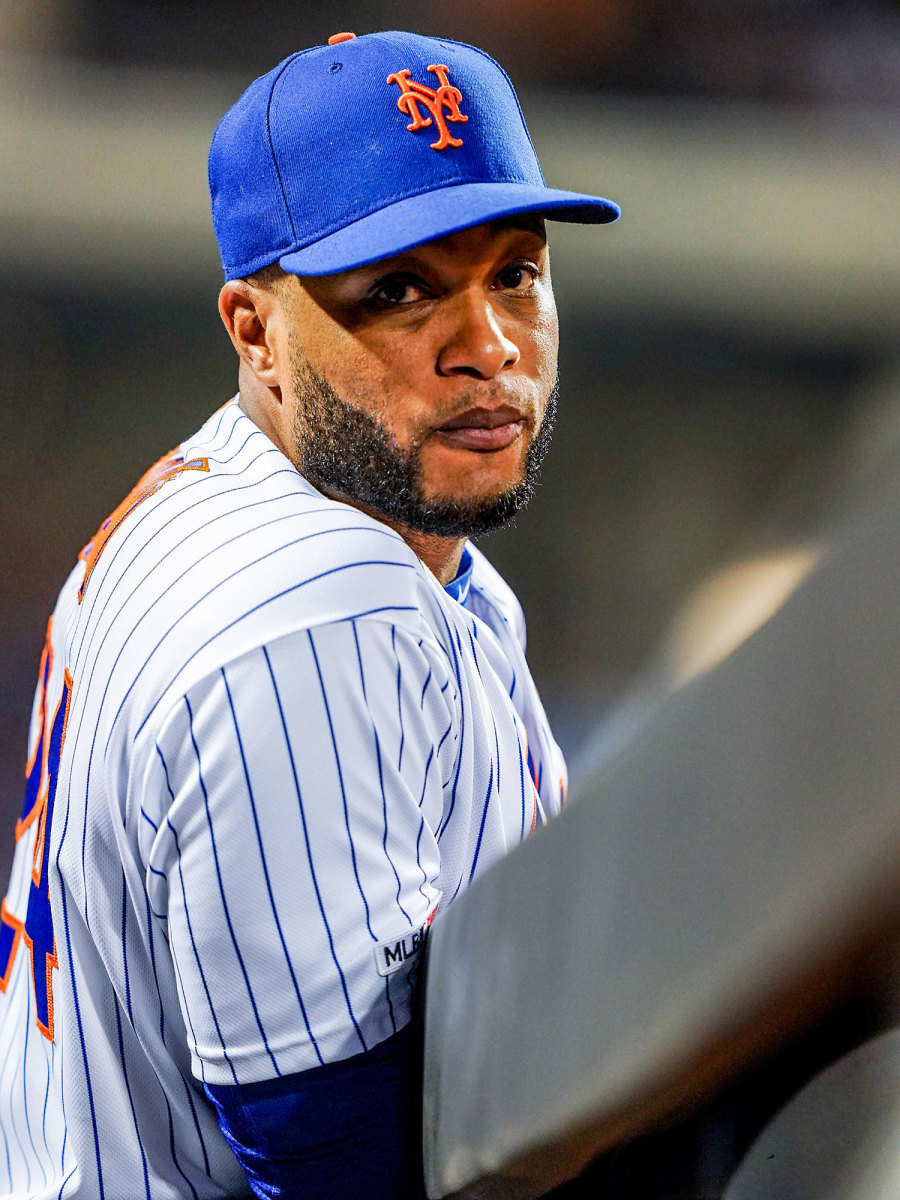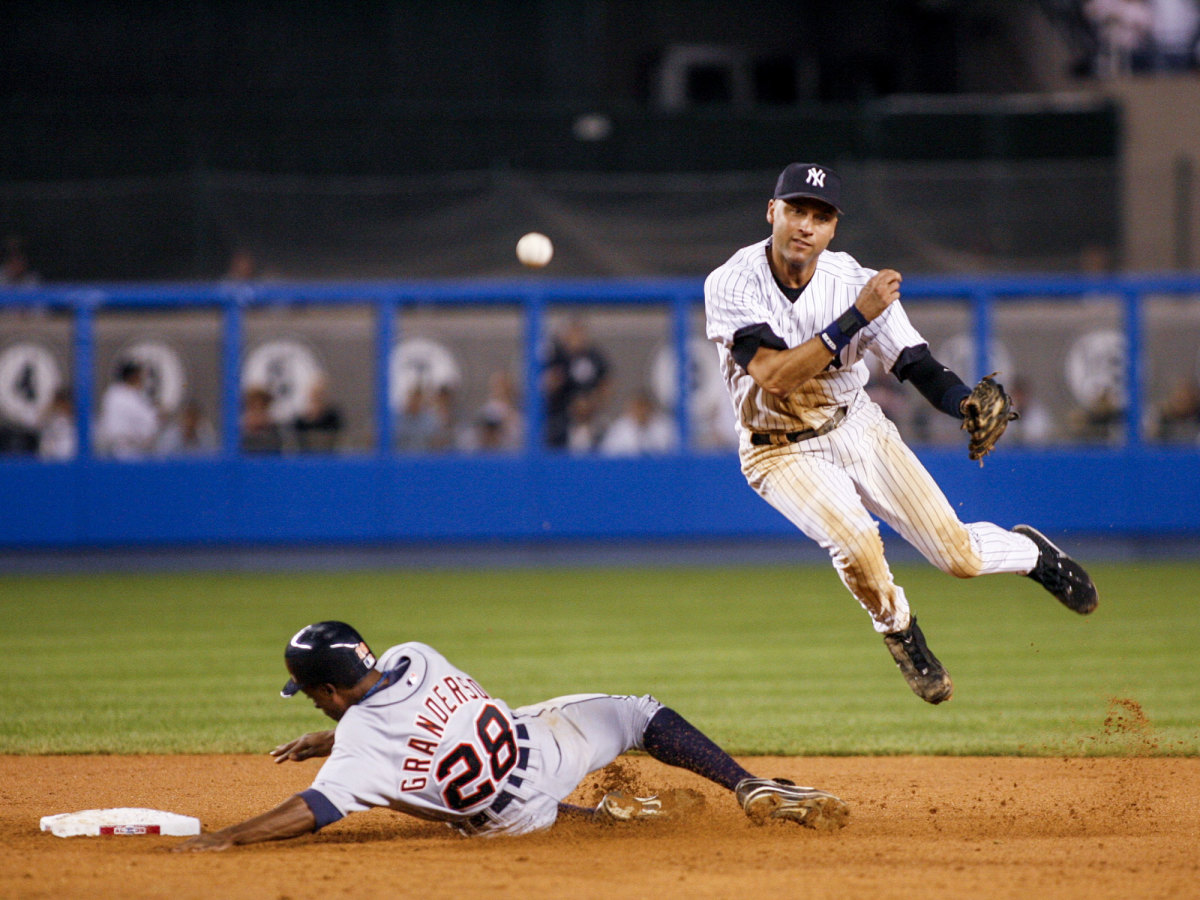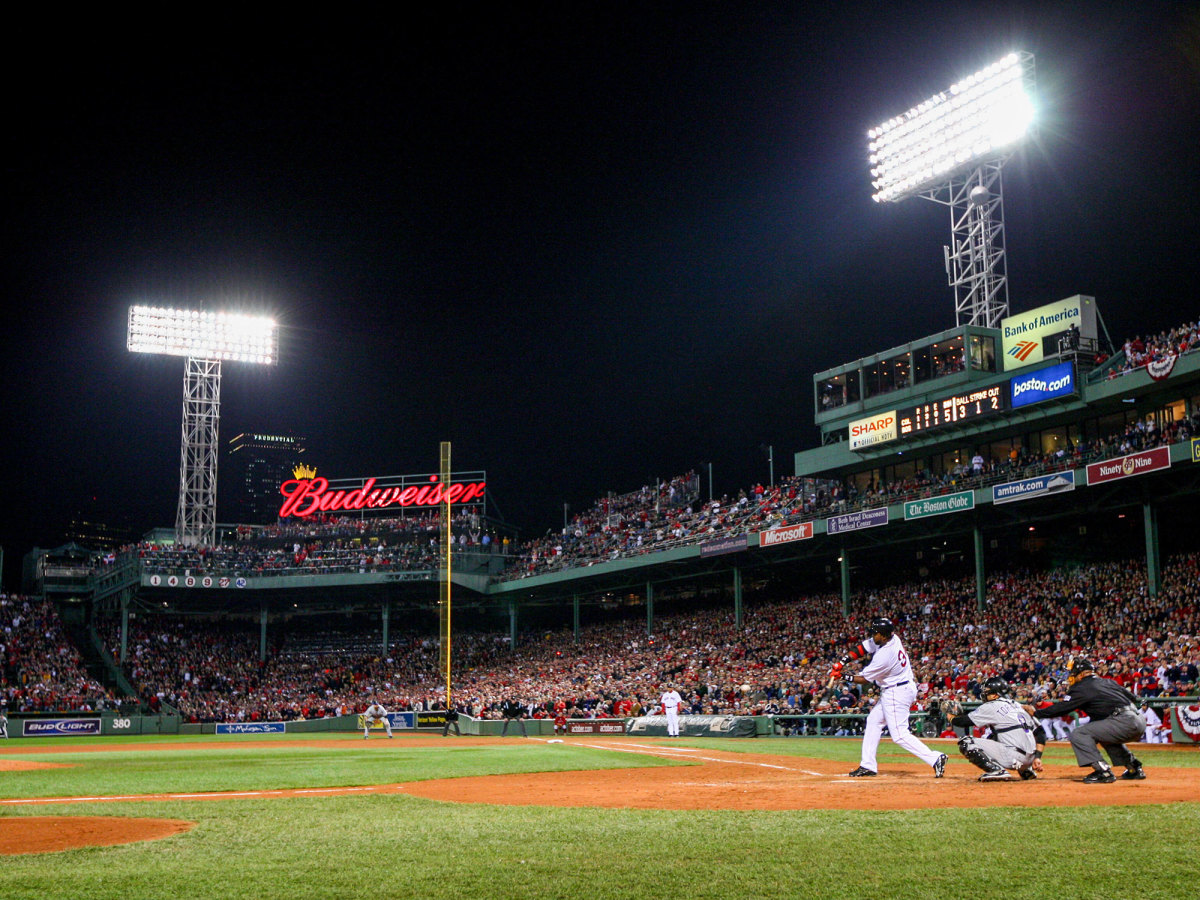Celebrating the Best Players of the 21st Century–Without the Cheaters
Sixteen days apart last month, Princess Secret and Robinson Canó tested positive for the same performance-enhancing steroid, stanozolol. Princess Secret is a two-year-old filly who had won three of her five career races before she was kicked out of the Breeders’ Cup. Canó was kicked out of baseball for 162 games.
That a 38-year-old second baseman on his last contract with $214 million already banked chose to use the same old-school, easily detected steroid that was given to a 1,000-pound thoroughbred tells you steroid use in baseball never is going away. Thus far Canó has offered as much explanation for his transgression as has the horse.

Stanozolol, sold under the brand name Winstrol, is the worst kind of PED if your aim is to avoid detection. It leaves a unique fingerprint and is detectable for several weeks to a month when taken in pill form.
Rather than packing on huge muscles, its main benefit is to increase oxygen levels in the blood, which increases stamina. It also adds lean muscle as it takes water out of the body. It tends to be favored by older players and pitchers later in a season and generally requires several weeks of use to generate effects. Way back in 1988 it was the drug of choice for sprinter Ben Johnson.
I thought about Canó, steroids and the historical complications of PEDs as I put together a way-too-early All-Century team. We are 21 seasons in, which is enough time to have some fun picking the best players at each position so far in the 21st century.
Steroids zapped some of the joy out of the exercise, just as they have the record book, the way we compare players of different eras, and the game itself. Testing for steroids with penalties began in 2004. Yet the shadow of the PED users continues to be long.
Canó, for instance, has the sixth-greatest WAR (68.9) of any player this century, the best by a second baseman. But his otherwise Hall of Fame numbers mean little. He is a two-time offender. Like others busted for steroids, he will leave the game someday with the equivalent of a dishonorable discharge. He can keep his money (though not his $24 million salary in 2021) and his artificial numbers. They are immutable. But so is the stain to his reputation.
It’s not just Canó. As I began putting my All-Century team together, I was surprised by how many “great” players otherwise under consideration I eliminated because their numbers are less than authentic.
Of the 31 players who have hit the most home runs this century, seven of them are known PED users. That’s 22.5% of the greatest sluggers of this century, even with testing in place for 17 of the 21 seasons.

This year has been one of especially deep, painful losses in baseball: Al Kaline, Tom Seaver, Lou Brock, Bob Gibson, Whitey Ford and Joe Morgan. As the tributes and remembrances poured in, none had to be couched by “yes, but …” when it came to their accomplishments.
The six late legends all were nominated for the All-Century team in 1999. Kaline, Seaver, Brock and Ford did not make it. Roger Clemens and Mark McGwire did.
Three years later, with the SI special report on steroids in baseball, the age of discovery began. Testing curtailed the Wild West days of rampant steroid use, but it did not and will not stop it.
It’s worth noting that Canó’s bust happened the same week Hall of Fame ballots were mailed to baseball writers. There is a reason players and owners have agreed on a program that bans steroid use and punishes violators without pay—and why there is a Horseracing Integrity and Safety Act. The reason is that the bedrock of sports is fair play. Those who willingly (and usually repeatedly) break the most fundamental precept of competition jeopardize the right to be honored in the same way as those who competed fairly.
No known steroid users made my All-Century team. Players were considered at positions at which they appeared in at least half their games this century (with exceptions noted).
Catcher: Yadier Molina
Second Team: Buster Posey
They have played their careers in near lockstep. From 2009 to ’18, 28 catching spots were filled on National League All-Star teams. Molina and Posey took 15 of them, or two more than all other catchers in the league combined. Posey’s WAR this century is 41.8. Molina’s WAR is 40.8. The separator here is volume. Molina has played in 767 more games than Posey with 621 more hits.
First Base: Albert Pujols
Second Team: Miguel Cabrera
Pujols made his debut in 2001. He is the century’s leader in home runs (662), hits (3,236), runs (1,843), RBIs (2,100) and WAR (100.6), and it’s not close. (Hank Aaron led last century in home runs and RBIs, Ty Cobb in runs, Pete Rose in hits and Babe Ruth in WAR.) It took some rule-bending to put Cabrera on the team ahead of Joey Votto and Todd Helton. Cabrera (fifth overall in WAR) played 46% of his games at first base. I rounded up.
Second Base: Chase Utley
Second Team: Ian Kinsler
A player with a high peak and low longevity, Utley will be an interesting Hall of Fame case when he gets onto a ballot in 2023. A standout defender and baserunner, he is eighth overall in WAR this century (64.4). Kinsler (55.2) ranks third among second basemen. Utley played 16 seasons but played 140 games only five times.

Shortstop: Derek Jeter
Second Team: Jimmy Rollins
Jeter and Rollins rank 1-2 in WAR, runs and hits. The current class of elite shortstops doesn’t yet approach the volume of Jeter and Rollins. Francisco Lindor, for instance, leads current shortstops with 138 home runs and Elvis Andrus leads with 1,743 hits. Those are far from Jeter’s totals this century (197 and 2,658).
Third Base: Adrián Beltré
Second Team: Chipper Jones
Beltré, who debuted in 1998, is an easy choice because of the quality and volume of his work. Despite 2012 as his last season, Jones led all other third basemen in OPS and WAR, getting the nod over Evan Longoria, Aramis Ramírez, Scott Rolen and David Wright.
Left Field: Matt Holliday
Second Team: Christian Yelich
Barry Bonds, Ryan Braun and Manny Ramirez ranked 1-2-4 in WAR at the position this century. Holliday was a career .300 hitter in early September of his final season (rounded up from .29958). He managed only four hits in his final 26 at bats to finish at .29904. Yelich’s MVP gives him the edge on Alfonso Soriano, Carlos Lee, Alex Gordon and Brett Gardner.
Center Field: Mike Trout
Second Team: Carlos Beltrán
Trout played in only half the decade but is the runaway leader in WAR. Beltrán’s apparent leadership role in the Astros’ sign-stealing scandal needs more explanation from him.
Right Field: Ichiro Suzuki
Second Team: Vlad Guerrero
With 3,089 hits in 19 years, Suzuki is another obvious pick. Mookie Betts is closing the gap in WAR on Guerrero (45.9–45.2), but Guerrero bests him in volume and hitting rate stats (average, on-base, slugging). Surprisingly, Bobby Abreu, J.D. Drew and Jason Heyward all rank in the top eight in WAR.

Designated Hitter: David Ortiz
Second Team: Jim Thome
Wait. Didn’t Ortiz test positive for steroids in survey testing in 2003? Yes and no. Ortiz’s name was one of a handful leaked by law enforcement sources among a list of 103 players identified as positive. But Ortiz’s case was the only one from those named players that the players association and the commissioner’s office defended as unverified. Once the union and MLB agreed on verifying enough positive tests to trigger testing in 2004 (5%) they did not concern themselves with verifying the overages—between 10 and 15 tests. The late PA director Michael Weiner said legal supplements at the time could trigger an unverified positive. In a defense by MLB without equal, commissioner Rob Manfred gave Ortiz a pass in 2016, referring to “legitimate scientific questions” about the test results of the players in the overage. Manfred said of Ortiz, “I do know that he’s never been a positive at any point under our program.” Thome played 47% of his games at DH (another rounding exercise).
Starting Pitcher: Justin Verlander
Second Team: Clayton Kershaw
CC Sabathia won the most games, threw the most innings and struck out the most batters, but didn’t reach the sustained level of excellence of Verlander (No. 1 in WAR) and Kershaw (No. 1 in FIP, tied with Jacob deGrom), who combined for five Cy Young Awards and two MVPs. Special mention to the late Roy Halladay, who completed 65 starts, more than Verlander and Kershaw combined. Nobody else had more than 39.
Relief Pitcher: Mariano Rivera
Second Team: Craig Kimbrel
Rivera was 30 years old when the decade started and he is by far the century’s best reliever, with 86 more saves than Francisco Rodríguez, No. 2 on the list, and easily the best in terms of adjusted ERA (217). One of the many unique superlatives about Rivera: He threw 13,549 pitches this century and threw just eight wild pitches, or about one every 1,700 pitches. Kimbrel edged out Billy Wagner for the second team, with advantages in FIP, strikeout rate, ERA and saves.
Read more of SI's Daily Cover stories here
